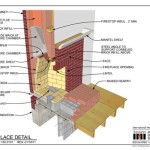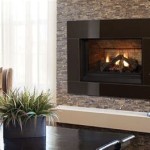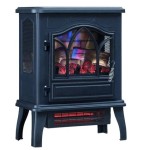Here is an article on the standard width of a fireplace mantel, adhering to all specified criteria:
Standard Width Dimensions of a Fireplace Mantel
The fireplace mantel serves as a prominent architectural feature in many homes, acting as a focal point for the room. Its function extends beyond mere aesthetics; it provides a surface for displaying decorative items, family photographs, and seasonal accents. One of the critical considerations when designing or renovating a fireplace is the width of the mantel. Understanding typical dimensions is essential for achieving a balanced and visually appealing design, ensuring safety, and complying with building codes.
The term "width" in the context of a fireplace mantel can refer to a few different measurements. It can signify the linear distance across the front face of the mantel shelf, also known as the length. It can also refer to the depth, or how far the mantel projects from the wall, and the thickness, which is the vertical dimension of the mantel. For the sake of this article, "width" will primarily refer to the length, or the horizontal span across the front face of the mantel.
While there is no single, universally mandated standard width for a fireplace mantel, common practices and building guidelines offer a range of acceptable and recommended dimensions. These dimensions are generally determined by the size of the fireplace opening, the overall scale of the room, and the desired aesthetic style. Deviating significantly from typical proportions can lead to an unbalanced look or even create safety hazards.
Factors Influencing Mantel Width
Several factors must be considered when determining the appropriate width for a fireplace mantel. These include the dimensions of the firebox, the type of fuel used (wood, gas, or electric), the clearances required by building codes, and the overall design style of the fireplace and surrounding room.
The size of the firebox opening is arguably the most significant factor influencing mantel width. A general rule of thumb is that the mantel should extend at least 6 to 12 inches beyond the firebox opening on each side. This extension provides a visual balance and helps prevent the mantel from appearing disproportionately small or overwhelmed by the firebox. For example, if a firebox opening is 36 inches wide, the mantel should ideally be between 48 to 60 inches in width.
The type of fuel used in the fireplace also impacts the required clearances and, therefore, the mantel width. Wood-burning fireplaces typically require larger clearances than gas or electric fireplaces due to the higher temperatures and potential for sparks. Building codes often specify minimum distances between combustible materials, such as the mantel, and the firebox opening. These clearances are intended to prevent fires from spreading and ensure the safety of the occupants. Gas and electric fireplaces, which generate less heat and produce no sparks, may allow for smaller clearances and, consequently, a narrower mantel.
Beyond functional considerations, the overall design style of the fireplace and surrounding room plays a crucial role in determining the appropriate mantel width. A traditional fireplace design might feature a wider, more ornate mantel, while a modern fireplace design might opt for a minimalist mantel with a narrower profile. The scale of the room is also important; a large room can accommodate a wider mantel without appearing crowded, while a smaller room might benefit from a narrower mantel to maintain a sense of proportion.
Typical Mantel Width Ranges
Despite the variability in fireplace and room sizes, some general guidelines can be used to determine the appropriate width of a fireplace mantel. These guidelines typically provide a range of acceptable dimensions based on the size of the firebox opening.
For smaller fireplaces with a firebox opening of 30 inches or less, a mantel width of 42 to 54 inches is generally recommended. This range allows for a sufficient extension beyond the firebox on each side while maintaining a balanced appearance. For medium-sized fireplaces with a firebox opening between 30 and 42 inches, a mantel width of 54 to 66 inches is typically appropriate. This range provides a more substantial presence without overwhelming the fireplace. For larger fireplaces with a firebox opening of 42 inches or more, a mantel width of 66 inches or greater is often required. In these cases, it is essential to consider the overall scale of the room and ensure that the mantel is proportional to the fireplace and surrounding space.
It is important to note that these are just general guidelines, and the ideal mantel width may vary depending on the specific circumstances. Consulting with a qualified contractor or designer is always recommended to ensure that the mantel is appropriately sized and installed in accordance with building codes and safety regulations.
Furthermore, the depth of the mantel shelf, or how far it projects from the wall, also affects the perceived width. A deeper mantel shelf can visually shorten its perceived width, so a slightly longer shelf might be required to maintain the desired proportions. Conversely, a shallower mantel shelf can make the width appear more prominent, potentially requiring a shorter width to avoid an overwhelming appearance.
Safety Considerations and Building Codes
Safety is a paramount concern when installing a fireplace mantel. Building codes typically specify minimum clearances between combustible materials, such as the mantel, and the firebox opening. These clearances are designed to prevent fires from spreading and ensure the safety of the occupants. Failing to comply with these codes can result in fines or even the need to remove and reinstall the mantel.
The specific clearance requirements vary depending on the type of fuel used in the fireplace and the local building codes. Wood-burning fireplaces generally require larger clearances than gas or electric fireplaces. It is essential to consult with a local building inspector or qualified contractor to determine the specific clearance requirements for your area.
In addition to clearance requirements, it is also important to consider the structural integrity of the mantel and its supports. The mantel should be securely attached to the wall to prevent it from falling and causing injury. The supports should be strong enough to bear the weight of the mantel and any decorative items placed on it. A professional installer can ensure the mantel is securely attached and adequately supported.
Furthermore, consider the materials used for the mantel itself. Some materials, like certain types of wood, are more flammable than others. Fire-resistant materials are preferable, especially in close proximity to the firebox. Treatments can also be applied to wood to increase its fire resistance, providing an extra layer of safety.
Electrical wiring in the vicinity of the fireplace should also be carefully considered. Electrical outlets and wiring should be properly insulated and protected from heat. Avoid running electrical cords across the front of the fireplace or mantel, as this can create a fire hazard.
Finally, regular inspection and maintenance of the fireplace and mantel are essential for ensuring continued safety. The chimney should be inspected and cleaned regularly to prevent creosote buildup, which can cause chimney fires. The mantel should be inspected for cracks, loose joints, or other signs of damage. Any necessary repairs should be made promptly.
In conclusion, determining the standard width of a fireplace mantel involves careful consideration of several factors, including the size of the firebox opening, the type of fuel used, the overall design style, safety considerations, and building codes. By following the guidelines and seeking professional advice when necessary, homeowners can ensure that their fireplace mantel is both aesthetically pleasing and functionally safe.

Best Fireplace Mantel Proportions How Not To Muck It Up Laurel Home

Fireplace Mantel Worksheet

Types Of Fireplaces And Mantels The Home Depot

Mantel Dimensions Fireplacepro

Danbury Wood Fireplace Mantel Standard Sizes Dimensions

How To Build Install A Fireplace Mantel We Love Fire

Average Fireplace Dimensions Building Plans House Diy

Fireplaceinserts Net Pearl Mantels Monticello Fireplace Mantel Surround

Bridget Fireplace Mantel Siteworks Mantels

Fireplace Mantel Installation Tips How To Antique Woodworks
Related Posts








